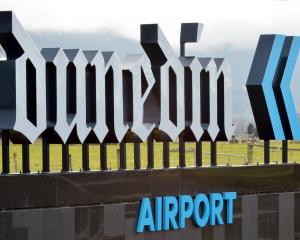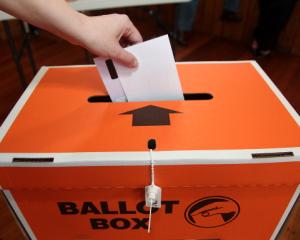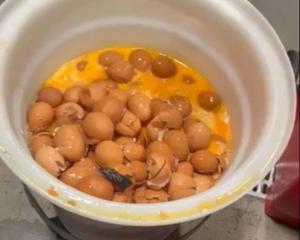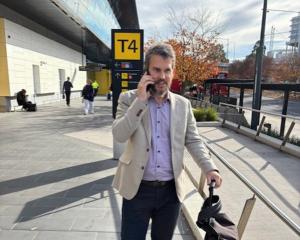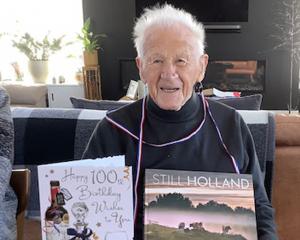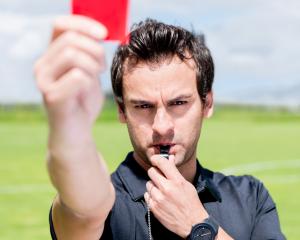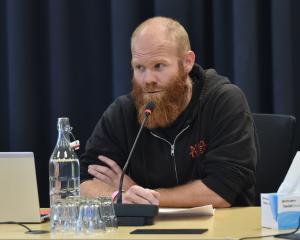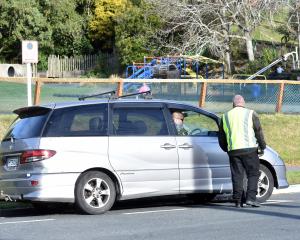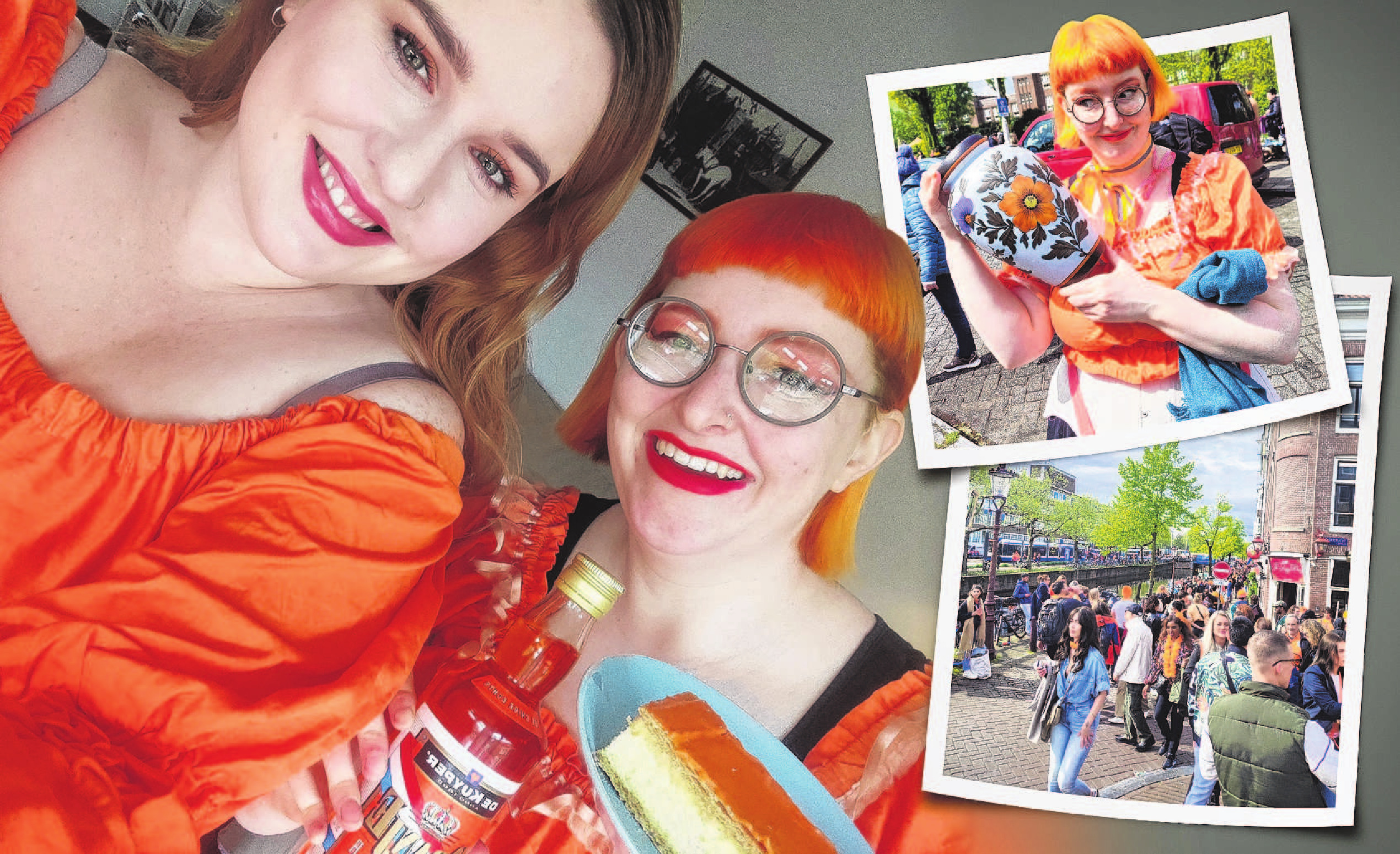
The canals were peppered with boats heaving with drunk orange revellers, and people crowded the sidewalks, selling old knickknacks, home-baking, and all manner of strange items (among other treasures, I spotted a CPR dummy, three toilet seats, a bright pink chainsaw and a traffic light for sale).
It was King’s Day, or "Koningsdag" in the Netherlands, and the entire population had seemingly turned out to celebrate the birthday of King Willem-Alexander, who ascended to the throne on April 30, 2013, following the abdication of Queen Beatrix, his mother. Traditionally, the King and his family visit a different Dutch municipality each year on King’s Day to celebrate with the locals. This year, King Willem-Alexander, Queen Maxima and Princesses Ariane, Amalia and Alexia visited Emmen in the north east.

Celebrated on April 27 each year (or the 26th if the 27th is a Sunday), Koningsdag is a joyous, chaotic festival where "orange madness", or "oranjegekte" reigns supreme, in honour of the House of Orange-Nassau, the Dutch royal family.
My friend Fidra and I went all out. I dyed my hair a bright copper colour, and Fidra went for a neon orange (she looked undeniably better than I did). Fidra also went to the trouble of sewing and dyeing us matching orange blouses. If there’s one thing my best friend commits to, it’s a costume party.
The holiday originally took place on August 31, 1885, known as Prinsessedag or Princess’s Day, in honour of Princess Wilhelmina’s 5th birthday, who was then the heir presumptive to the Dutch throne. When Wilhelmina ascended to the throne in November 1890, the holiday was renamed Koninginnedag, or Queen’s Day, and was first celebrated on August 31, 1891.
In September 1948, Wilhelmina’s daughter, Juliana, became queen, prompting the holiday to be moved to her birthday, April 30. In 1980, Queen Juliana abdicated, passing the throne to her daughter, Queen Beatrix.
Beatrix chose to retain the celebration on April 30, as her own birthday fell in chilly January, rendering outdoor festivities impractical due to the cold weather.
Koningsdag is the only day of the year when the Dutch government allows street sales without a permit and exempts vendors from paying value-added tax.
Consequently, there is a nationwide flea market called the vrijmarkt, or "free market", where you can find almost anything under the sun for sale on the footpath.
Wandering around the city in the days prior to Koningsdag, I noticed several sections of the pavement taped off, with the word "BEZET" ("occupied") scrawled in chalk on the ground. Evidently, some sellers were already marking their territory.
At the Apollolaan vrijmarkt I found myself a delightful vase for €10 ($NZ18), a pair of sunglasses for 50c, and a large gilded Hodegetria (an iconographic depiction of the Virgin Mary holding the child Jesus at her side) lying on the street in a pile of trash. I was absolutely thrilled.
We wandered past Vondelpark, a large public park in the borough of Amsterdam-Zuid, where children were selling their cast-off toys and old clothes. One enterprising boy was charging passersby €1.50 per move on a chess board.
I’m no royalist or monarchist, but I will readily admit I thoroughly enjoyed celebrating King Willem-Alexander’s 57th birthday—partly because of the copious amounts of white wine I consumed, partly because of the brilliant deals I struck at the vrijmarkt, and partly because Willem-Alexander is not my king, and quite frankly, I don’t have to worry about his interference into any of my political affairs.
Some 300 years ago I (or my Irish Catholic ancestors) might have had due cause to worry about quite a different William of Orange, but in 2024, I’m perfectly happy to don my brightest orange clothes and head out into the sun to celebrate a Dutch king’s birthday.
As journalist Nicola Chadwick said, writing for Radio Netherlands Worldwide, "Friendships — and community — will be formed. For me that’s really what [King’s] Day is all about. It’s not an outburst of patriotism, it’s not even about the popularity of the royal family. It’s about a sense of belonging. For one day, everybody is the same in Holland. Bright orange and barmy."
It also goes without saying that I would never participate in an Orange march here in the UK, which is quite a different kettle of fish to the Netherland tradition.
In the UK, Orange marches are associated with the Orange Order, a Protestant fraternal organisation that originated in Northern Ireland. While for many, the marches are seen as a celebration of Protestant Unionist heritage, for others, the Orange marches are provocative, exclusionary and marked by sectarian violence. You won’t catch me in Ulster on The Twelfth, even if I do look fetching in bright orange.
Before this trip to Amsterdam, I read Russell Shorto’s marvellous book Amsterdam: A history of the world’s most liberal city. I learned a great deal about the Glorious Revolution, the Dutch Enlightenment, tulip mania, Spinoza, the Dutch East India Company, the Nazi occupation and Amsterdam’s liberal exceptionalism.
Being in Amsterdam for King’s Day was an even more educational experience. I learned about unity and camaraderie, Dutch entrepreneurship, patriotism and traditions. Oranje boven! Orange on top!
— Jean Balchin is an ODT columnist who has just started a new life in Edinburgh.

